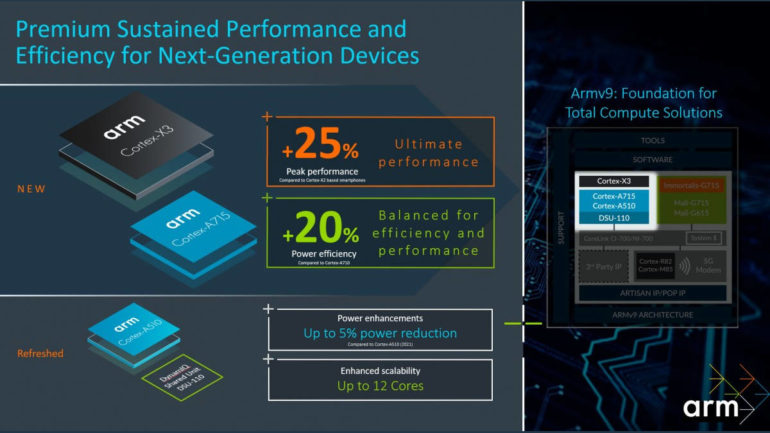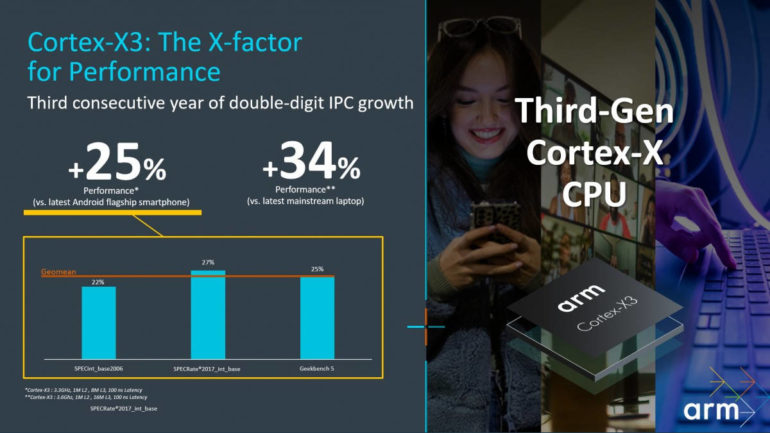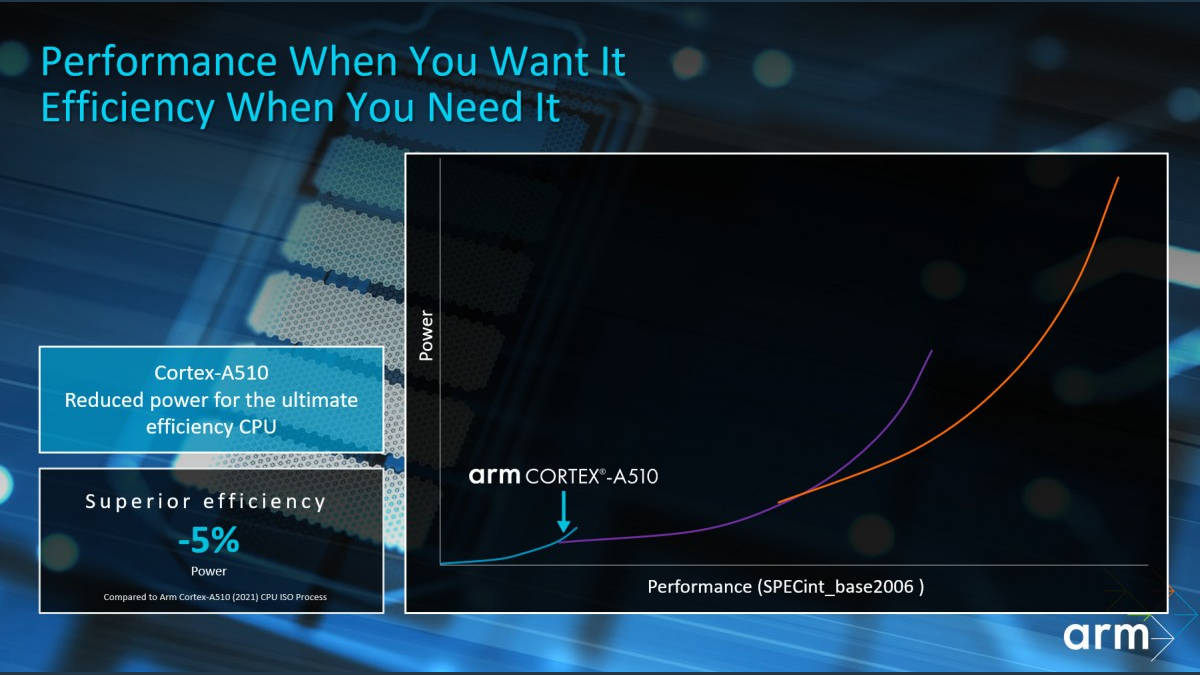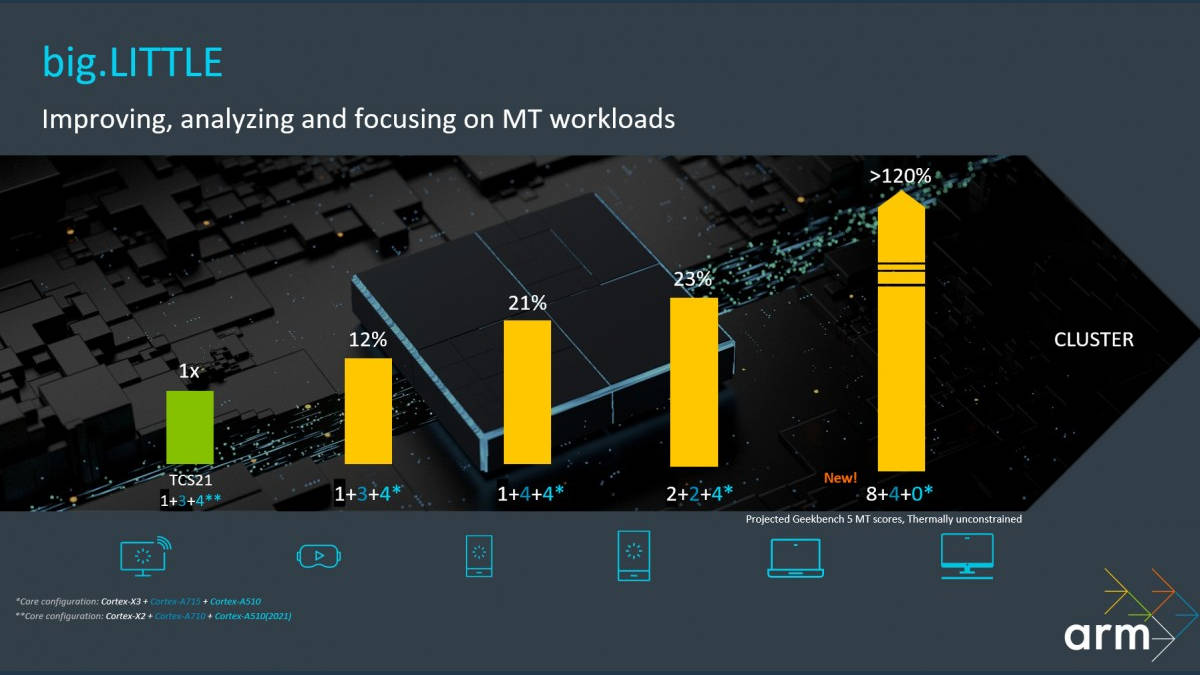ARM has just unveiled its second-generation ARMv9 processor cores – Cortex-X3 and A715. The A510 core also got a minor refinement.
The new designs will bring increased performance and improved efficiency alongside new and powerful configurations.

First off is the Cortex-X3, according to the manufacturer they are in their third year of double-digit IPC growth while still focusing on peak performance just like its predecessors.
This new core can deliver up to a 25% increase in performance compared to other Android chipsets and for windows devices using ARM design, it can reach up to 35% improvement.

Next is the Cortex-A715. This core completes ARM’s transition from 32-bit processors (for smartphones). This enabled the engineering team to build the instruction decoder hardware 4x smaller.
Furthermore, the A715 has 20% more power efficiency that the A710 at the same level of workload or a 5% improvement in performance for the same power usage.
In addition, the X2 was already a 64-bit only core, ARM had more time to improve on the X3 design to better fit the ARMv9 instruction set.

Next is the smaller Cortex-A510 which received a minor refinement. This refinement resulted in a 5% bump to ins power efficiency.

As for the whole chipset, ARm has reworked its DynamIQ Shared Unit system to allow up to 12-core processors with 16MB of L3 cache with the most powerful designs featuring 8x Cortex-X3 and 4x Cortex-A715 with no small cores.

Finally, possible designs will become available like the 1+3+4, 1+4+4, and/or the 2+2+4. These new configurations will allow ARM’s clients to design the chips that are perfect for a given performance and power tier.
Started his freelancing adventure in 2018 and began doing freelance Audio Engineering work and then started freelance writing a few years later.
Currently he writes for Gadget Pilipinas and Grit.PH.
He is also a musician, foody, gamer, and PC enthusiast.







